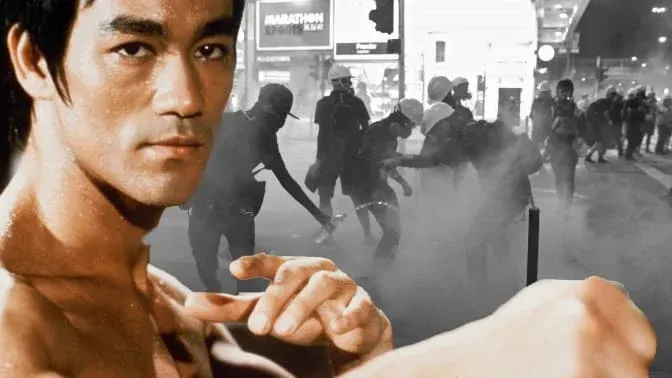Cook caught up in shocking violence near Hong Kong MTR station recalls horrific ordeal as 20 people attacked him with sticks and canes as he made his way home from work
Calvin So was left severely injured with skin on his back torn, his hands and shoulders wounded and swollen
Embattled officers face heavy criticism for arriving at scene too late to stop attacks but pro-Beijing lawmaker Regina Ip calls for understanding
SCMP
Elizabeth Cheung
Peace Chiu
Athena Chan
Published: 2:26pm, 23 Jul, 2019
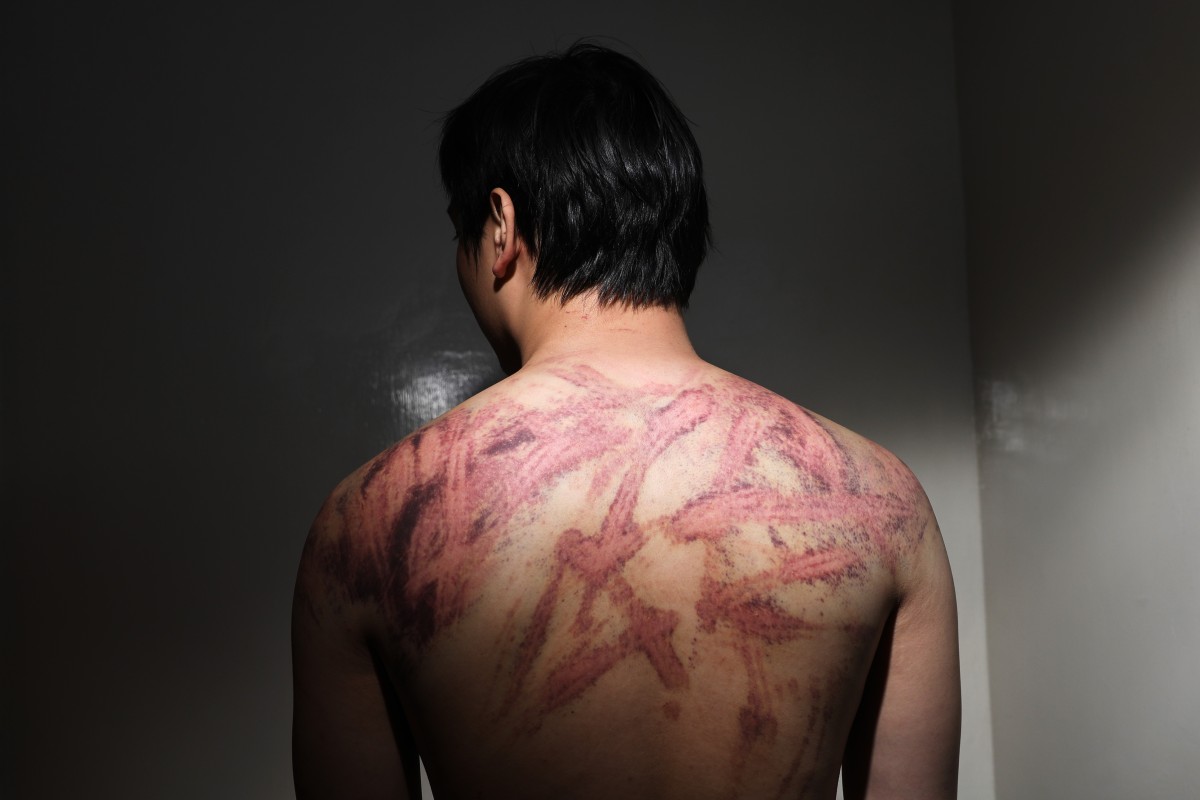
Calvin So shows the marks on his back caused by a brutal attack near Yuen Long MTR station on Sunday night. Photo: Sam Tsang
A cook caught up in shocking violence in a northern Hong Kong district on Sunday night has recalled the horrendous experience of his journey home.
Calvin So, 23, had finished work at a restaurant in Yoho Mall, the shopping centre next to Yuen Long MTR station in northwestern Hong Kong, and was walking towards an exit just after 9.45pm. He was attacked by a group of men after simply saying: “There are lots of people in white clothes here.”
“Some people approached me. Soon after, a person started beating me and more joined in,” So said, adding he was attacked by about 20 people, armed with sticks and canes, during the assault.
“I didn’t do anything and asked them to stop beating me. But they just ignored me,” he said.
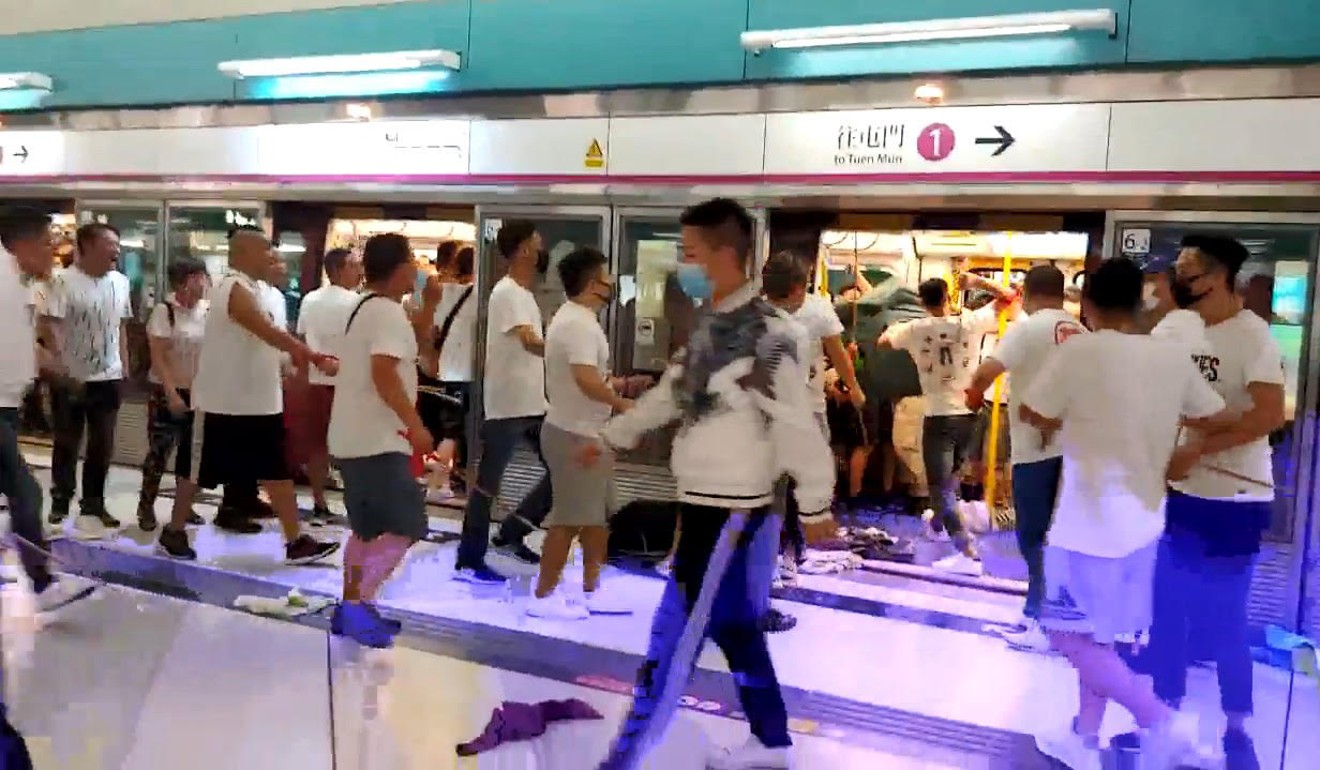
A mob of men in white T-shirts attack protesters and passengers at Yuen Long MTR station on Sunday night. Photo: Handout
The railway station was the scene of unprecedented violence on Sunday night as a marauding gang of men in white T-shirts ambushed people including demonstrators returning home from a protest march elsewhere in the city. Some 45 people were injured and 11 have since been arrested.
So’s ordeal lasted for around five minutes before he tried to flee to safety. He was chased and struck several more times as he escaped the brutality.
The violent attacks left his back severely injured with torn skin. His hands and legs were wounded and his shoulders swollen.
He was admitted to Tuen Mun Hospital for treatment and said the injuries left him unable to sleep on his back on the first night.
“I was in pain whenever something touched my back,” he said.
So’s recovery was expected to take several weeks and he hoped police would investigate the assaults.
“There should be at least a public explanation,” he said. “It is unacceptable to see those people randomly attacking others.”
There should be at least a public explanation
Calvin So
By 6pm on Tuesday, five men were still receiving treatment at Tuen Mun Hospital. Among them, one was critical, one was serious and the remaining three were stable.
Meanwhile, Hong Kong’s former security chief and veteran pro-establishment lawmaker Regina Ip Lau Suk-yee called for residents to show understanding over police handling of the violence, arguing the force had faced attacks comparable to “guerilla warfare” over the past two months.
Sales down at least 10 per cent at book fair as protest halts traffic
“The force has been worked to the point of exhaustion and manpower is strained … with so many large-scale protests and attacks since June 9,” Ip, a member of the government’s advisory panel, said on a radio programme on Tuesday.
The city’s embattled police force came under heavy fire for arriving at the scene too late to stop the attacks on anti-government protesters, journalists and passers-by at the station, as well as terrified passengers on a train.

Regina Ip calls on Hongkongers to show understanding to city’s exhausted police force. Photo: Sam Tsang
Ip, an Executive Council member and New People’s Party lawmaker, believed many officers from Yuen Long were deployed to Hong Kong Island as protesters laid siege to Beijing’s liaison office following a march against a now-suspended extradition bill.
Hong Kong has seen a wave of anti-government, mostly peaceful, protests since early June. The city’s legislature was stormed and trashed on July 1, after Chief Executive Carrie Lam Cheng Yuet-ngor refused to fully withdraw the bill, which would have allowed the transfer of suspects to other jurisdictions including mainland China.
Lam first suspended the bill, then declared it “dead” on July 9.
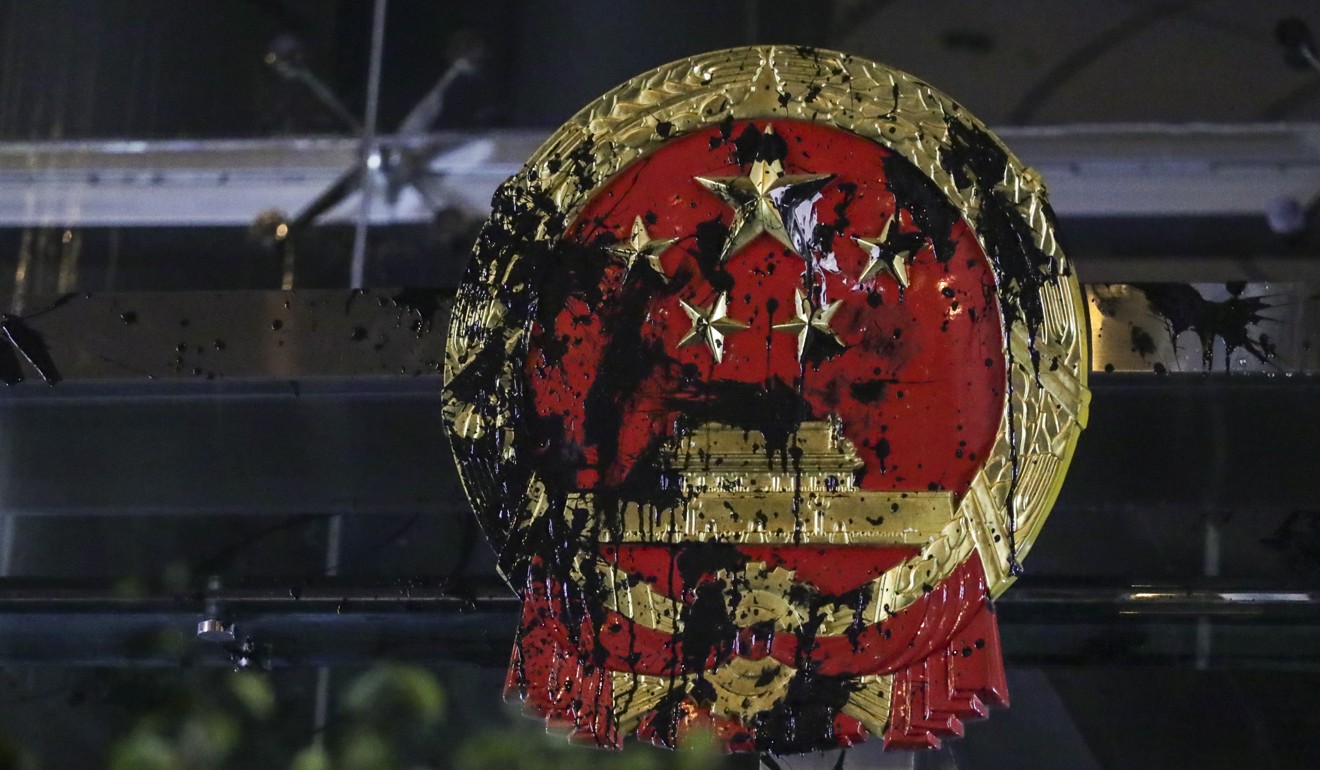
The Chinese National emblem is vandalised by protesters who rally outside the liaison office in Sai Ying Pun on Sunday. Photo: Edmond So
“I hope Hongkongers can understand our police have done very well handling things such as public security and theft, so the overall crime rate is very low,” Ip said.
“What happened over the past month or so is not normal violence, but continued violence. It is like facing urban guerillas.”
Ip added she hoped the Chinese army would not be needed to handle the current crisis.
“I am worried some people are trying to force the People’s Liberation Army to come here,” she said, though she believed the Hong Kong and central governments would try to prevent this as much as possible.
I am worried some people are trying to force the People’s Liberation Army to come here
Lawmaker Regina Ip Lau Suk-yee
She also warned that while there were no casualties at the siege of the liaison office, there was strong political meaning to the actions, with the compound vandalised and the national emblem on the building front defaced.
Meanwhile, about 30 members of the Foreign Correspondents’ Club (FCC) Hong Kong and journalists silently protested outside the press club on Tuesday morning to condemn the violence directed at journalists when covering the protests last weekend, particularly the “sickening scenes of mob violence” in Yuen Long.
At least four local journalists were attacked by the marauding gang on Sunday. Two victims were reportedly from Apple Daily, a Chinese-language newspaper, and one each from the Stand News website and cable broadcaster Now TV.
One female reporter was attacked during a live online report. The news outlet said her hands and right shoulder were hurt and she suffered swelling on the back of her head.
President of the press club Jodi Schneider said: “We are out here standing for press freedom and to say yes to press freedom, no to violence against journalists. We are renewing our call for independent investigation by a third party, into any harassment or violence against journalists during the protests in Hong Kong.”
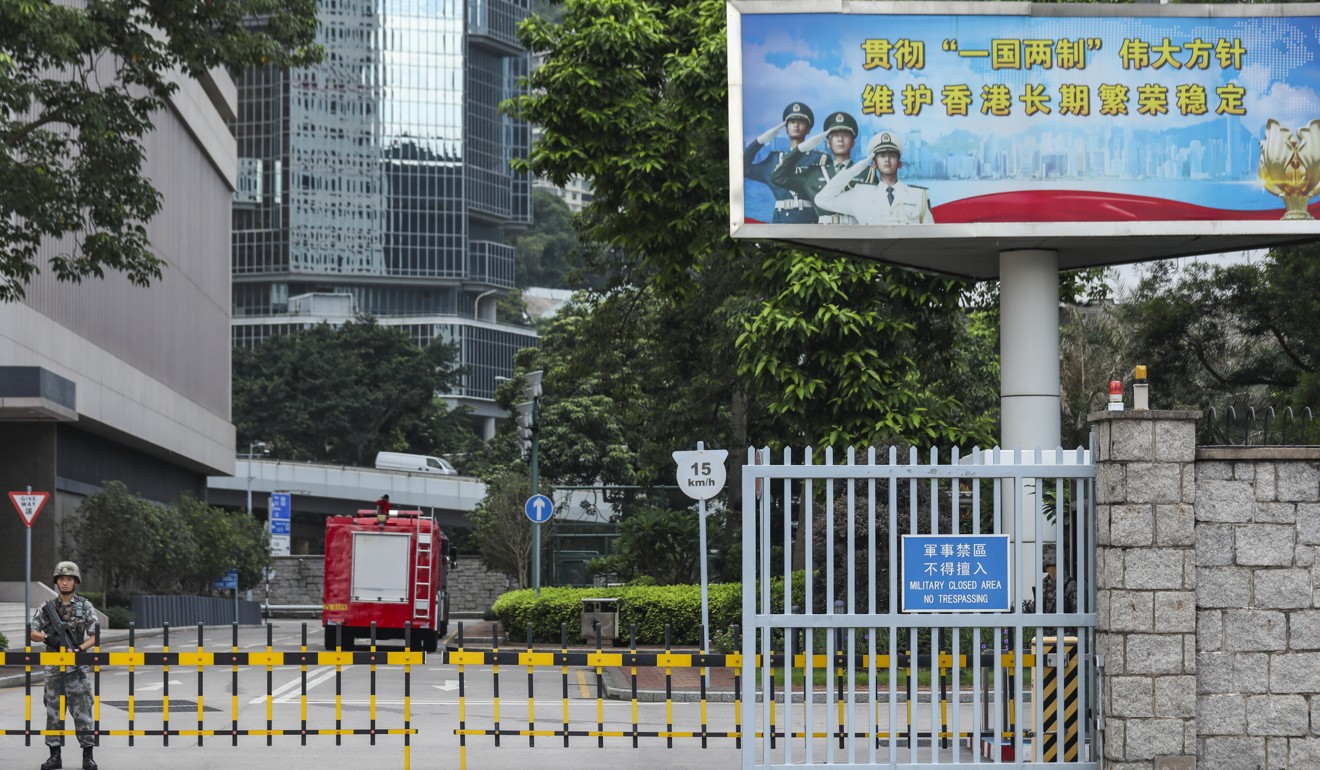
A soldier stands guard at the People’s Liberation Army’s Hong Kong garrison. Photo: Xiaomei Chen
In a statement, the club called on Hong Kong police and the authorities to urgently find and bring to justice those who carried out the unprecedented attack.
A joint statement issued on Monday by the Hong Kong Journalists Association, the Hong Kong Press Photographers Association and the Independent Commentators Association made an urgent appeal to local police to protect citizens and journalists.
This article appeared in the South China Morning Post print edition as: Cook recalls post-work ordeal as group of about 20 bash him









 Reply With Quote
Reply With Quote






